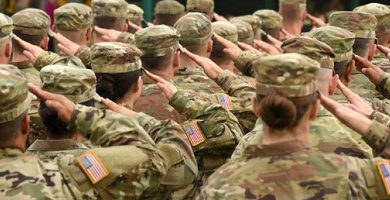What was war communism?
We explain what war communism was, what were the objectives of this system and the consequences it produced.
-
What was war communism?
War Communism was called the political and economic system with which Soviet Russia was administered (prior to the existence of the USSR ) between June 1918 and March 1921, in the framework of the Russian Civil War. It consisted of a management totally aimed at keeping the cities and the Red Army the best supplies of weapons and food possible, against the exceptional conditions imposed by the military confrontation.
War Communism was decreed by the Higher Economic Council, known as VSNJ , and culminated in the announcement of the New Economic Policy (NEP) proposed by Vladimir Lenin and lasted until 1928. The implementation of this special method consisted of a series of economic and political measures, such as:
- The government controlled all the big factories in Russia.
- The railroads passed to military control.
- The government planned and controlled the production according to its needs.
- Maximum discipline and obedience were demanded from the workers (strike ban).
- The “non-working class” had to perform mandatory work.
- Rationing and controlled distribution of food and goods.
- Illegalization of all forms of private enterprise .
- Distribution of the agricultural surpluses of the peasants among the entire population .
It should be noted that these measures were taken in a context of civil war , so they were much less coordinated and consistent in practice. Many territories were held incommunicado and acted without instructions from some of the central government, so war Communism is often understood as just a desperate set of measures to win the armed conflict.
-
Objectives of war communism
There is debate about the real purpose of war Communism. For many, including the Bolsheviks, it was nothing more than an attempt to survive the civil war and win at any cost . Seen this way, the Soviet government would have operated under pressure from socio-economic contingencies.
However, war Communism is also accused of having been a strategy to advance unpopular and radical economic and social measures, such as the extermination of private property and the market economy, which can be attributed to the urgency that the war efforts entailed. .
-
Consequences of war communism
War Communism further complicated the difficulties that civil war implied for the Russian State . The refusal of the peasantry to surrender their surplus of production caused a massive exodus of cities to the countryside , where it was easier to feed, causing large cities such as Moscow and Petrograd to lose about 50 and 75% of their population respectively, among the years of 1918 and 1920.
The shortage originated a black market of goods , although there was a martial law in force against speculation, and the collapse of the ruble originated a system of bartering of goods and food. 90% of wages were paid with goods instead of money, and in 1921 there was a massive famine that caused between 3 and 10 million deaths.
This catastrophic series of events had an end after the outbreak of strikes and peasant rebellions (such as the Tambov Rebellion) throughout the country, before which it was decided to implement in 1921 a model of state capitalism called New Economic Policy (NEP) , in which the establishment of small private companies was allowed. This last model existed until 1928, when it was replaced by the First Five-Year Plan of Josef Stalin.





